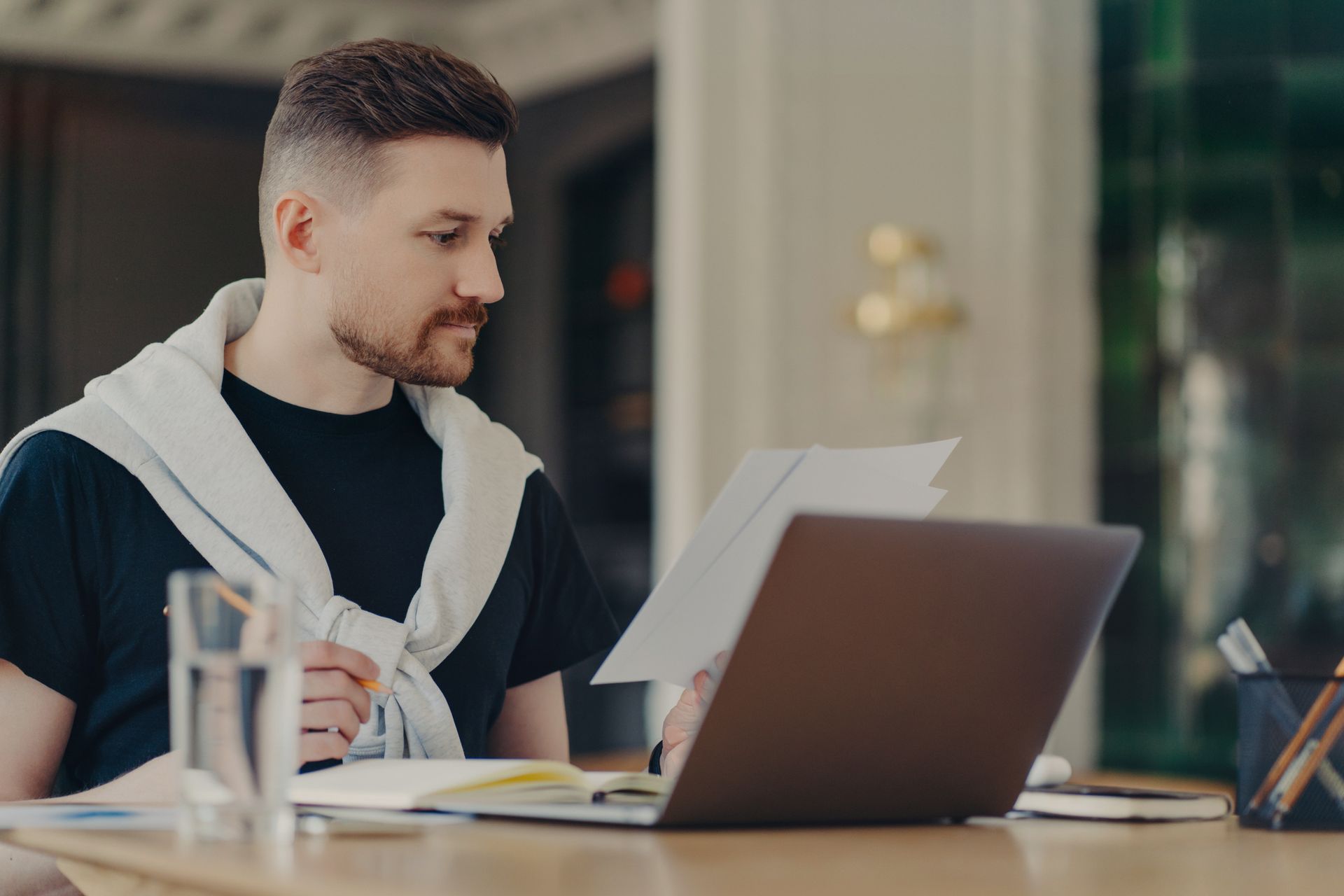Streamlining Payroll: Top Error-Proofing Techniques
Managing payroll efficiently is critical for any business, big or small. It's not just about ensuring that employees are paid on time, but also about maintaining accuracy and compliance with legal requirements. Payroll mistakes can lead to unhappy employees, legal penalties, and damage to an organization's reputation. There are proven strategies that can help minimize errors and streamline the payroll process.
Recognizing Common Payroll Errors
Payroll errors are discrepancies that occur during the process of compensating employees, often resulting in incorrect payment amounts or misdirected funds. These errors can range from overpayments or underpayments to erroneous tax withholdings or benefits deductions. Simple mistakes, like transposing numbers when entering hours worked, or complex calculation errors in tax withholdings or overtime rates, are common examples. Unnoticed, these errors can accumulate, causing significant financial discrepancies and regulatory noncompliance.
The impact of payroll errors stretches beyond mere numerical corrections. For employees, any mistake that affects their paycheck can result in distress and financial trouble. It may disrupt their trust in the employer's ability to manage critical aspects of their professional lives. On the business end, payroll inaccuracies can lead to strained employee relations, legal consequences, and monetary penalties. Not only do they potentially reflect poorly on the company's reputation and employee morale, but they also signal weaknesses in payroll management systems that could hint at deeper operational problems.
Understanding the sources of payroll inaccuracies is crucial in preventing them. Manual data entry, for instance, is prone to human error. Incorrect keying of information can result from fatigue, distraction, or misunderstandings about payroll data. The misclassification of employees, whether as exempt or non-exempt from overtime or as independent contractors versus full-time employees, can also result in payroll issues. Other common sources include a lack of understanding of complex regulations, outdated payroll systems, or failure to maintain up-to-date employee information.
For small businesses, especially in the Sandy and Hurricane areas, where local regulations and small-scale operations contribute to the payroll complexity, attention to accuracy and compliance is paramount. Companies in these regions must remain vigilant against these common errors to avoid unnecessary hardship for both the business and its employees.
Payroll errors are more than just a clerical nuisance; they can have far-reaching effects on both employees and the business as a whole. By understanding the common mistakes that occur and the sources from which they stem, businesses can take the first step in developing better systems to avoid such issues.
Steps for Identifying Payroll Discrepancies
Preventing payroll errors begins with proactive measures, such as regular auditing and payroll reconciliation. These processes involve comparing payroll reports to time records and other financial documents to identify inconsistencies. Conducted frequently, they can help businesses catch discrepancies early, reducing the risk of compounded errors over time. Integrating payroll systems with up-to-date technology can bolster accuracy checks. By using software that cross-verifies timesheet data with payroll outputs, companies can proactively detect anomalies that indicate errors.
The role of trained personnel in managing and supervising payroll cannot be overstated. Human oversight is essential, even in an automated system, to interpret the anomalies that technology identifies. Payroll specialists or an accountant with a keen eye for detail are crucial for a foolproof payroll system. It’s also best practice to establish a payroll audit committee composed of members from different departments to ensure thorough oversight.
Correcting Underpayments and Overpayments
Once a payroll error is flagged, immediate action is necessary. For underpayments, businesses should promptly facilitate the payment of owed wages to adhere to labor laws and maintain employee morale. Overpayment can be more complex, often requiring a transparent process agreed upon with the employee to recover the overpaid funds without causing financial strain. It is crucial to understand the legal framework governing payroll corrections to ensure compliance during the correction process.
Establishing a standardized policy and procedure for payroll corrections can streamline resolution and ensure fairness. This policy should detail steps for
rectifying errors and be communicated across the organization to set clear expectations among all employees.
Communication Protocols with Employees
When addressing payroll issues, transparency with affected employees is critical. It involves acknowledging the mistake, explaining what caused it, and outlining the steps being taken to correct it. Businesses should ensure communication is timely and delivered via a formal yet compassionate approach, respecting the sensitivity surrounding financial matters.
Guidelines for informing employees should cover who is responsible for communicating errors, the method of communication (such as in-person, email, or letter), and providing a contact point for employees to ask questions or express concerns. Such protocols help maintain trust between the employer and employees during the resolution of payroll issues and beyond.
Identifying and rectifying payroll errors requires a multi-faceted approach, from regular audits and using technology to informed employee communication. Implementing these steps diligently will lead to accurate payroll management, thereby preserving the company's integrity and its relationship with its workforce.
Strategic Prevention of Payroll Errors
A critical aspect of managing payroll errors is to adopt proactive steps that prevent them from occurring in the first place. An essential element of this approach is to leverage technology to facilitate regular auditing and payroll reconciliation. Such processes are vital to ensuring payroll accuracy, and when done routinely, they serve as a safety net to catch errors in their tracks before they escalate. Implementing and routinely updating automated systems can drastically reduce the chances of manual input mistakes. Software that offers real-time accuracy checks and alerts can help to spot discrepancies rapidly. This technology is especially beneficial for flagging inconsistencies, such as mismatched tax withholdings or incorrect salary amounts, before they affect an employee's paycheck. Technology alone is not the cure-all for payroll challenges. The role of well-trained personnel in overseeing payroll systems is equally important. Human resources professionals and payroll administrators need to be well-versed in the latest payroll laws and practices. They should perform regular manual checks and reconcile any discrepancies that software might not detect. The combination of cutting-edge technology and expert staff creates a robust defense against payroll inaccuracy.
Long-Term Solutions and Policies
Long-term solutions to prevent payroll errors include establishing clear, written payroll policies. Having a set of standardized procedures for all payroll-related tasks ensures consistency and reduces the chance of errors. These policies should be reviewed and updated regularly, reflecting any changes in legislation or business structure. For some businesses, particularly those without in-house expertise, outsourcing payroll to a third party can be an effective risk mitigation strategy. Specialist firms are likely to have the experience, knowledge, and technical resources to manage payroll effectively, reducing the likelihood of errors. Another key to minimizing errors is to stay up-to-date with payroll compliance laws. This not only involves adapting to new laws but also providing employees with regular training on these changes. Maintaining accurate payroll records and giving employees access to their payroll information can help spot any mistakes early on.
Embracing Technological Advancements for Payroll
Technological advancements offer a promising solution for minimizing payroll errors. Cloud-based payroll solutions can provide businesses with more reliable, efficient, and scalable payroll processes. These systems can automate many aspects of payroll, from calculating pay and deductions to generating tax forms and providing digital pay stubs. Automation and cloud services not only increase accuracy but also save time, reduce paperwork, and can be more cost-effective in the long run. It's crucial for any chosen software to integrate seamlessly with the business's other systems. Such integration ensures coherent financial management and helps maintain the integrity of payroll data. A proactive and strategic approach to payroll management — combining preventative audits, policies, training, technological advancements, and clear communication — is invaluable. These measures can help avoid the stress and financial burden of payroll errors, securing a business’s reputation and its employees' trust.
Ready to revolutionize your payroll process and eliminate errors? Our team at My Quality Payroll is here to guide you with industry-leading techniques and personalized support. Reach out today to ensure your payroll is as efficient and error-free as possible.










